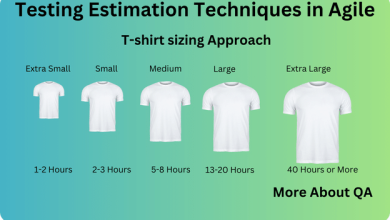Introduction
Are you aspiring to become a Senior Test Engineer or preparing for an interview to advance in your career? If so, you’ve come to the right place. In this comprehensive guide, we will delve into a curated selection of Manual Testing Interview Questions for Senior Test Engineers.
As the demand for skilled testing professionals continues to grow, mastering the art of manual testing is crucial for those seeking senior roles in Quality Assurance (QA).
Questions and Answers | Manual Testing Interview Questions for Senior Test Engineer
Prior to proceeding with these questions, I assume you have completed a comprehensive QA course or training. If you haven’t, it’s strongly advised to complete one first. I’ve provided answers based on my knowledge, but the questions are essential for you. You can answer them based on your own knowledge or research for confirmation.
Manual Testing Interview Questions Section 1
Q1. Why are you considering leaving your current company?
A1. I’m exploring new opportunities for professional growth.
Q2. Can you describe your testing process?
A2. Our testing process involves requirements analysis, test planning, test execution, defect tracking, and reporting.
Q3. What does your Quality Assurance (QA) process entail?
A3. Our QA process includes establishing quality standards, conducting audits, and ensuring compliance with best practices.
Q4. Explain the concept of shift-left testing and its importance in early issue identification and team coordination.
A4. Shift-left testing involves moving testing activities earlier in the development process to catch issues sooner and enhance team collaboration.
Q5. What distinguishes a test process from a QA process?
A5. A test process primarily focuses on finding defects, while a QA process focuses on preventing defects and ensuring overall quality.
Q6. What is your current Quality Policy?
A6. Our Quality Policy is to deliver products that meet or exceed customer expectations while adhering to industry standards.
Q7. What parameters are necessary to establish test management phases?
A7. Key parameters for test management phases include project scope, objectives, resources, timelines, and test strategy.
Q8. What parameters are essential for building a QA process?
A8. Essential parameters for building a Manual Testing Interview Questions process include quality standards, policies, procedures, and continuous improvement initiatives.
Q9. What is the Test Case Execution velocity of your team?
A9. Our team’s Test Case Execution velocity is currently 20 test cases per day.
Q10. How do you measure the quality index of your build?
A10. We measure the quality index through metrics like defect density, test coverage, and customer feedback.
Q11. Describe the methods and techniques for Risk Identification and mitigation.
A11. Risk identification methods include brainstorming and analysis. Mitigation techniques involve risk mitigation plans and contingency plans.
Q12. What is the procedure or plan before moving to production?
A12. Before production, we conduct final testing, obtain approvals, and follow a deployment plan to minimize risks.
Q13. Define forward traceability, intermediate traceability, and backward traceability.
A13. Forward traceability links requirements to test cases, intermediate traceability connects test cases to test scripts, and backward traceability trace defects to their root causes.
Q14. Explain how you would prioritize and index severity for maintenance mode.
A14. Priority and severity are assigned based on the impact on users, with high-priority issues causing significant disruption and high severity indicating critical defects.
Q15. If your organization tasked you with transforming a test process, how would you go about improving it?
A15. I would conduct a process assessment, identify bottlenecks, propose improvements, and implement changes gradually with a focus on continuous improvement.
Section 2
Q16. If Google is your client and emphasizes quality, how would you demonstrate the use of the right tools and practices to Google?
A16. I would showcase our toolset, best practices, and quality metrics in regular reports and meetings to align with Google’s quality expectations.
Q17. What does “shipment assurance testing” involve?
A17. Shipment assurance testing ensures that products meet quality standards before shipment, reducing the risk of defects reaching customers.
Q18. As a QA Manager, what operational procedures have you implemented?
A18. I have implemented standardized testing processes, defined roles and responsibilities, and established quality control checkpoints.
Q19. What types of periodic test and QA data do you utilize?
A19. We utilize defect reports, test execution status, regression test results, and customer feedback as periodic test and QA data.
Q20. Differentiate between Quality Assurance (QA) and Quality Control (QC).
A20. QA focuses on processes to prevent defects, while QC involves activities to detect and correct defects.
Q21. Define a test plan.
A21. A test plan is a document that outlines test objectives, scope, schedule, resources, and test approach.
Q22. Define a test case.
A22. A test case is a detailed description of a specific test scenario, including input, expected output, and execution steps.
Q23. What is a master test plan?
A23. A master test plan is a high-level document that provides an overview of the testing approach, resources, and schedules for a project.
Q24. Can you explain right-shift testing?
A24. Right-shift testing involves moving testing activities closer to the development phase to identify and address issues earlier in the process.
Q25. Could you provide an explanation of left-shift testing?
A25. Left-shift testing entails introducing testing activities earlier in the software development lifecycle to identify and address issues at the requirements and design stages.
Q26. What does maintenance testing involve?
A26. Maintenance testing includes testing updates, patches, and modifications to existing software to ensure that changes do not introduce new defects.
Q27. Are you familiar with multi-tenant testing?
A27. Yes, multi-tenant testing involves validating software for multiple clients or users who share the same application instance.
Q28. Can you describe the estimation techniques used in testing?
A28. Estimation techniques in testing include expert judgment, historical data analysis, and parametric modeling to predict the effort and resources required for testing.
Q29. What metrics are commonly used in software testing?
A29. Common software testing metrics include defect density, test coverage, test execution progress, and defect aging.
Q30. Explain SQL injection and discuss its potential implications.
A30. SQL injection is a security vulnerability where malicious SQL queries are injected into an application’s input fields. Its implications can include unauthorized data access or data loss.
Section: 3
Q31. If you were to assess the security of google.com, what steps would you take to identify and address SQL injection vulnerabilities?
A31. I would conduct a security audit, review code, perform penetration testing, and implement security best practices to identify and mitigate SQL injection vulnerabilities.
Q32. Suppose you are tasked with testing a website like cricinfo.com. What types of bugs or issues would you anticipate discovering during your testing?
A32. I would anticipate discovering issues related to data accuracy, page load times, broken links, and user interface inconsistencies.
Q33. Can you provide examples of usability test cases for a website, such as abc.com?
A33. Usability test cases could include tasks like user registration, navigation testing, form submission, and accessibility testing to evaluate the website’s user-friendliness.
Q34. What is the global Quality Policy for software testing?
A34. The global Quality Policy for software testing typically emphasizes the commitment to delivering high-quality software products by adhering to industry standards, following best practices, and continually improving testing processes. It aims to ensure that software meets or exceeds customer expectations while minimizing defects and risks in software applications.
Q35. Explain the concept of Agile methodology.
A34. Agile is an approach to software development that promotes iterative and collaborative development, emphasizing adaptability and customer feedback.
Q36. Define Scrum in the context of project management.
A36. Scrum is an Agile framework that organizes work into time-bound iterations called sprints, focusing on delivering value and fostering teamwork.
Q37. Describe the Agile Manifesto and its principles.
A37. The Agile Manifesto is a set of guiding values that prioritize individuals and interactions, working software, customer collaboration, and responding to change in software development.
Q38. What is SDLC (Software Development Life Cycle)?
A38. SDLC is a structured framework that defines the phases and processes involved in software development, from planning and design to testing and maintenance.
Q39. What is STLC (Software Testing Life Cycle)?
A39. STLC is a structured approach to software testing that encompasses phases such as test planning, test design, test execution, and defect management.
Q40. Name the key phases in both SDLC and STLC.
A40. In SDLC, the phases include planning, requirement analysis, design, implementation, testing, deployment, and maintenance. In STLC, the phases involve test planning, test design, test execution, defect reporting, and closure.
Q41. Explain SQL joins and their purpose in database operations.
A41. SQL joins are used to combine data from two or more database tables based on a related column, enabling retrieval of meaningful and interconnected data.
Q42. Define bug leakage in software testing.
A42. Bug leakage happens when a defect goes undetected during testing and is found by users or customers after the software is deployed, resulting in post-release problems.
Q43. Outline the Bug Life Cycle in software testing.
A43. The Bug Life Cycle includes stages such as New, Assigned, Open, Fixed, Retested, Verified, and Closed, tracking the status and progress of defect resolution.
Q45. What are defects in the context of software development?
A45. Defects, in software development, refer to issues, errors, or deviations from expected behavior in software applications that need to be identified and corrected.
Conclusion:
In conclusion, a Senior Test Engineer role demands a deep understanding of manual testing principles and practices. By thoroughly preparing for interviews and mastering the art of manual testing, you can position yourself for success in this rewarding career path.
We hope this guide on “Manual Testing Interview Questions for Senior Test Engineer” has equipped you with valuable insights and knowledge to excel in your interviews. Remember, continuous learning and staying up to date with industry trends are key to thriving in the dynamic field of software testing.
Good Luck!

